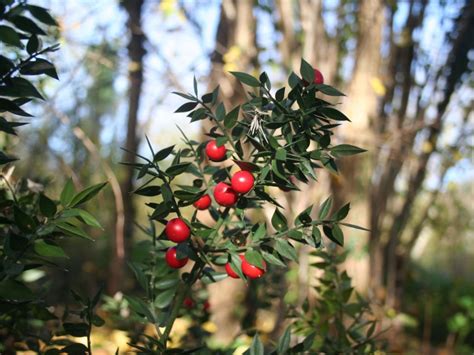All You Need to Know About Butcher's Broom
Butcher's broom FAQ
Why is it called a butcher's broom?
R. aculeatus was given its common name, butcher's broom, because its stiff twigs were bound together and used by butchers in Europe to keep their cutting boards clean. The plant has a long history of use. More than 2000 years ago, it was noted as a laxative, diuretic, and a phlebotherapeutic (beneficial to veins) agent.
What are the side effects of Butcher's broom?
Common side effects of Butcher’s Broom may include mild gastrointestinal discomfort, such as upset stomach or nausea. To address these issues, it’s advisable to take Butcher’s Broom with food or a full glass of water. If these side effects persist or worsen, it’s essential to consult a healthcare provider for guidance on managing them effectively.
What is a butcher's broom & how does it work?
Butcher’s broom is a traditional remedy especially in Europe where it developed the reputation for effectively treating complaints related to poor circulation. According to traditional use, it is effective for an impressive variety of symptoms linked to bad circulation including cramping, tension, itching, swelling and leg pains.
What does a butcher's broom look like?
Butcher’s Broom is a fascinating evergreen shrub that belongs to the Asparagaceae family. It is well-known for its unique appearance, featuring stiff, leaf-like structures that grow from the stem and look like small brooms, hence its name. What is the scientific name of Butcher’s Broom? The scientific name of Butcher’s Broom is Ruscus aculeatus.
What is a butcher's broom?
Butcher’s broom ( Ruscus aculeatus) is a small evergreen shrub. It’s native to Western Europe and has especially tough branches. Historically, butchers would bundle its branches to sweep off their chopping blocks — which is how it got its name. What’s more, butcher’s broom has been used in herbal medicine for thousands of years.
What is the scientific name of Butcher's broom?
The scientific name of Butcher’s Broom is Ruscus aculeatus. This name is derived from the Latin word “ruscus,” referring to the plant’s resemblance to a broom, and “aculeatus,” which means “prickly” or “spiny,” a reference to its pointed leaves. Does Butcher’s Broom have other common names?
Is Butcher's broom safe?
Butcher’s broom is an herbal remedy that may relieve symptoms of CVI, OH, hemorrhoids and chronic inflammation. It appears to be safe and has few side effects. Still, speak with your doctor before taking it, especially if you’re on kidney or blood pressure medications. Dosages may vary by condition.
What does a butcher's broom taste like?
Butcher’s broom (botanical name Ruscus aculeatus L.) is a member of the lily family. The plant also has a lot in common with the asparagus plant. Typically, the young stems and roots are used to create supplements. In some cultures, the shoots are prepared and eaten similarly to asparagus, although the flavor is much more bitter.
Butcher's broom References
If you want to know more about Butcher's broom, consider exploring links below:
What Is Butcher's Broom
- https://www.healthline.com/nutrition/butchers-broom
- https://draxe.com/nutrition/butchers-broom/
- https://www.webmd.com/vitamins/ai/ingredientmono-320/butchers-broom
- https://www.ancientherbswisdom.com/butchers-broom-50-questions-and-answers/
- https://www.medicinenet.com/what_is_butchers_broom_good_for/article.htm
- https://www.drugs.com/npc/butcher-s-broom.html
- https://www.organicfacts.net/butchers-broom.html
- https://healthyfocus.org/benefits-butchers-broom/
- https://examine.com/supplements/butchers-broom/
Butcher's Broom Information
Explore Related Topics
Varicocele Repair: What Role Does Diet and Nutrition Play?
Engage in conversation about the potential impact of diet and nutrition on varicocele repair and male fertility.
